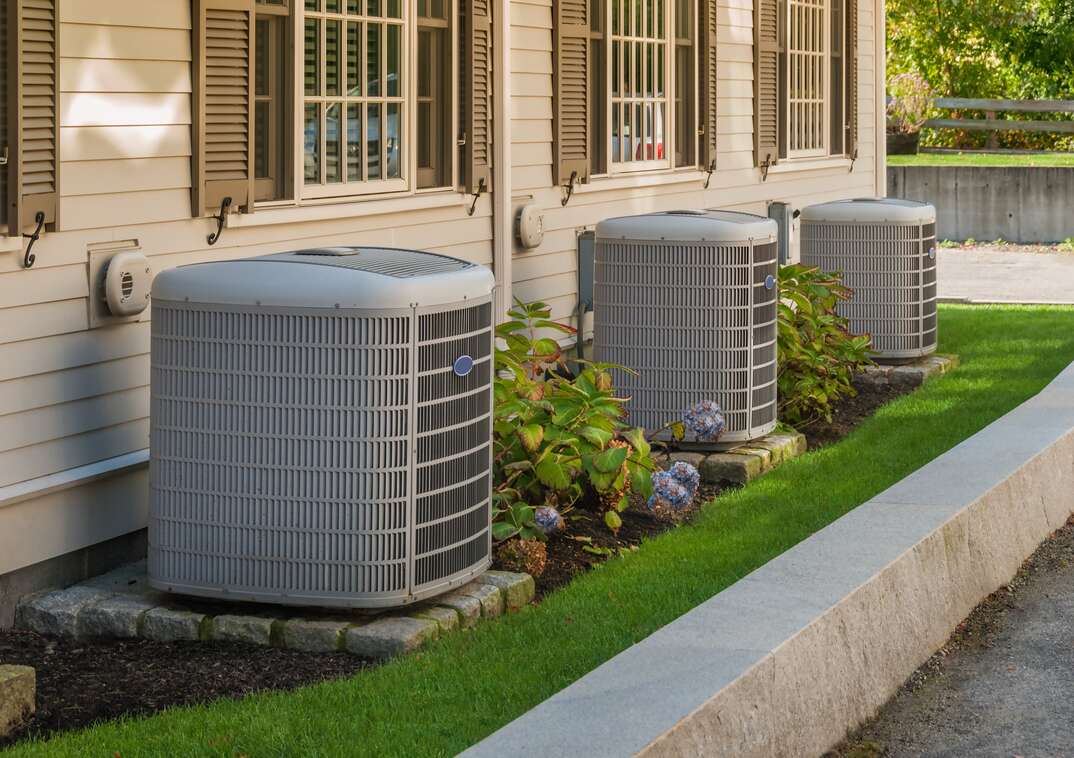What to Know About HVAC Efficiency Ratings: SEER, EER and HSPF

The summer heat is scorching, and your air conditioner is working tirelessly to keep your living spaces cool and comfortable. As long as it continues to do its job, you’re unlikely to think about its HVAC efficiency rating. But you should — because just as a leaky faucet can run up your water bill, an inefficient HVAC system can result in higher energy costs.
Read More Heating and Cooling Articles
So, let's dive into the world of HVAC efficiency ratings. We’ll focus on SEER (Seasonal Energy Efficiency Ratio), EER (Energy Efficiency Ratio) and HSPF (Heating Seasonal Performance Factor) and uncover how they’re linked to your home comfort and savings.
The Purpose and Metrics of Common HVAC Efficiency Ratings
HVAC efficiency ratings play a vital role in helping homeowners determine the quality of a system's output and how it can affect their costs. Let's look at the most common efficiency ratings in some detail.
EER: Energy Efficiency Ratio
EER is a measure of cooling efficiency for air conditioning systems. It's calculated by dividing the cooling output of an air conditioner in BTUs (British Thermal Units) per hour by the amount of energy it consumes in watts. EER tells you how efficiently an air conditioner operates at a specific temperature — usually 95 degrees Fahrenheit. A higher EER value indicates better energy efficiency, which means the system provides more cooling for each unit of energy consumed. In essence, a higher rating signifies that your air conditioning unit can provide superior cooling comfort without straining energy resources.
SEER: Seasonal Energy Efficiency Ratio
SEER is a vital metric for evaluating the performance of air conditioners and heat pumps. Unlike EER, which focuses on a fixed temperature, SEER takes into account the system's performance across various temperatures over an entire cooling season. Basically, it's like comparing miles per gallon for your car over a range of driving conditions. The higher the SEER rating, the more energy-efficient the system is and the more significant your potential energy savings. Therefore, it provides you with a panoramic view of your cooling system's capabilities. This can help you anticipate how the system will perform during hot summer days and cooler evenings.
SEER2: Taking Efficiency a Step Further
SEER is widely recognized, but there's another term that deserves attention. SEER2 is an extended version of SEER. It factors in part-load performance, which is crucial since HVAC systems rarely operate at full capacity all the time. SEER2 provides a more comprehensive understanding of how efficiently a system operates under varying conditions, making it a more accurate indicator of how an HVAC system operates in the real world. You may find a SEER2 rating more to your liking if top-notch accuracy is important to you because it accounts for the full spectrum of real-world usage.
More Related Articles:
- Hiring an HVAC Tech? Here are 5 Top Tips
- What's in My HVAC Technician's Van?
- HVAC Out? 5 Common Causes and Quick Fixes for Each
- How Much Does an HVAC Filter Cost?
- HVAC Upkeep Costs: Everything You Need to Know
HSPF: Heating Seasonal Performance Factor
Now that we’ve covered air conditioner efficiency, let’s look at how the efficiency of heating elements is gauged. HSPF is a measure used to evaluate the efficiency of heat pumps during the heating season. Similar to SEER, HSPF accounts for the system's performance over the entire heating season, considering various temperatures and operating conditions. A higher HSPF value indicates better energy efficiency and can lead to substantial energy savings when compared to less efficient heating systems. Therefore, you may find the rating particularly important if you want to know a system's performance capability and how economical it will be.
Understanding these efficiency ratings isn’t only about saving money — it's also about being environmentally conscious. Cooling and heating systems in the United States account for a significant portion of energy consumption. While it's good that high-efficiency HVAC systems with superior SEER, EER and HSPF ratings can cut down your utility bills, this isn’t their only benefit. They also decrease the overall demand for energy, reducing the country’s carbon footprint. Therefore, making purchasing decisions partly based on HVAC efficiency ratings is your contribution to making the planet safer for yourself, your loved ones and future generations.
Energy Star and Beyond: Striving for Efficiency Excellence
You may have come across the Energy Star label while shopping for appliances. It’s awarded to products that meet stringent energy efficiency criteria set by the U.S. Department of Energy. Energy Star-rated HVAC systems generally have higher SEER, EER and HSPF ratings, indicating their commitment to energy efficiency. Opting for an Energy Star-certified system ensures your system performs better and positions you as an environmentally responsible consumer.
Elocal Editorial Content is for educational and entertainment purposes only. Editorial Content should not be used as a substitute for advice from a licensed professional in your state reviewing your issue. Systems, equipment, issues and circumstances vary. Follow the manufacturer's safety precautions. The opinions, beliefs and viewpoints expressed by the eLocal Editorial Team and other third-party content providers do not necessarily reflect the opinions, beliefs and viewpoints of eLocal or its affiliate companies. Use of the Blog is subject to the
Website Terms and Conditions.The eLocal Editorial Team operates independently of eLocal USA's marketing and sales decisions.



